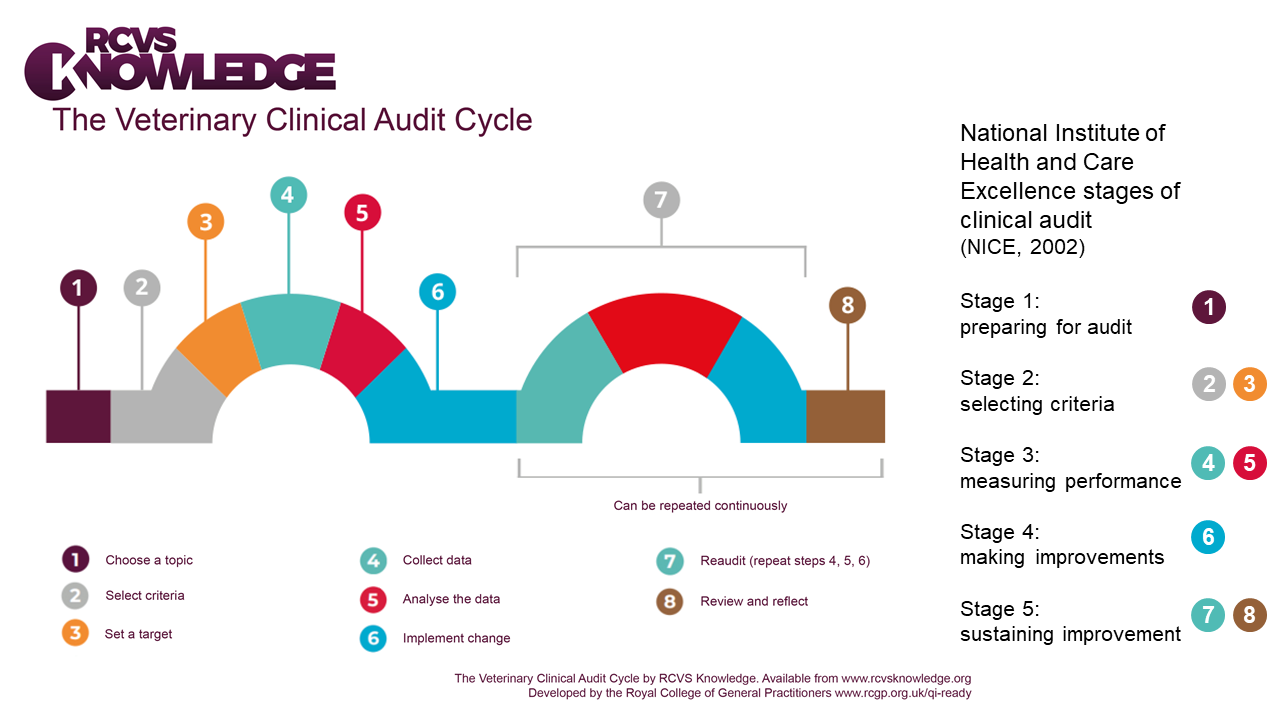Assess
5. Clinical audit as a quality improvement tool
Clinical audit can help with assessing the implementation of EBVM in practice, for personal and practice-level professional improvement.
Clinical audit is:
a quality improvement process that seeks to improve patient care and outcomes through systematic review of care against explicit measures and the implementation of change. (NICE, 2002)
Brief introductions to key elements of the stages of the clinical audit cycle are outlined in this chapter. For a more comprehensive overview, RCVS Knowledge has collated a wide range of quality improvement resources , including an e-learning course on clinical audit and a short summary infographic about the stages of clinical audit .
The key components of clinical audit are:
- measurement (measuring a specific element of clinical practice)
- comparison (comparing results with the recognised standard)
- evaluation (reflecting on the outcome of an audit and where indicated, changing practice accordingly).
Figure 6 below shows the eight-stage clinical audit cycle from RCVS Knowledge , together with how these stages align with the commonly-used five-stage audit cycle defined by the National Institute of Health and Care Excellence (NICE, 2002).
Figure 6: The veterinary clinical audit cycle

The eight stages in the veterinary clinical audit cycle are listed in Figure 6 above, alongside related stages in the NICE five-stage audit cycle:
- Choose a topic (Stage 1 of NICE audit cycle 'Preparing for audit')
- Select criteria
- Set a target (Stages 2 and 3 relate to Stage 2 of NICE audit cycle 'Selecting criteria')
- Collect data
- Analyse the data (Stages 4 and 5 relate to Stage 3 of NICE audit cycle 'Measuring performance')
- Implement change (Stage 4 of NICE audit cycle 'Making improvements')
- Reaudit (repeat steps 4, 5 and 6)
- Review and reflect (Stages 7 and 8 relate to Stage 5 of NICE audit cycle 'Sustaining improvement')
Audit and research are different, although there can be overlap, and audits have potential to identify where further research is needed.
Research is concerned with discovering the right thing to do whereas audit is intended to make sure that the thing is done right. (Smith, 1992)
Other articles on clinical audit including some comparisons with research include: Viner (2009); Wylie (2015); Waine & Brennan (2015) and Waine et al. (2018a, 2018b).